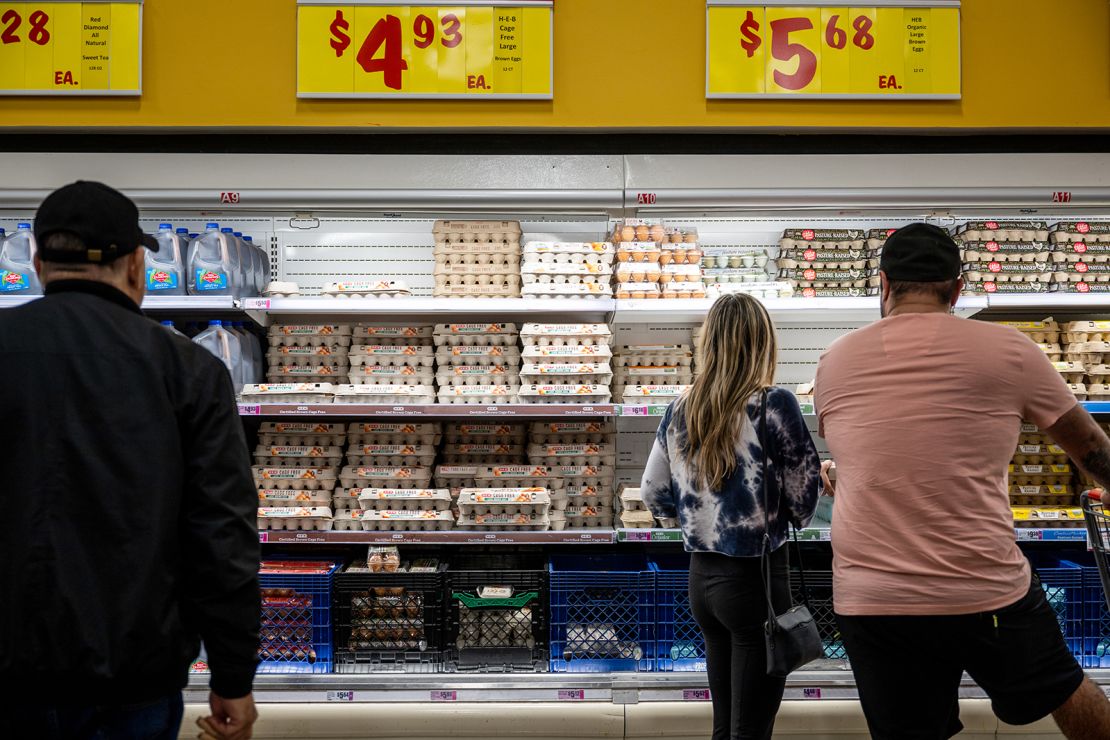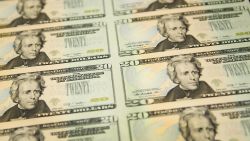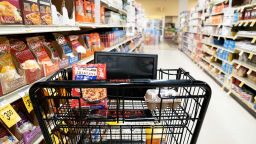Grocery prices rose slightly last month, but eggs are finally getting cheaper in the supermarket.
In February, egg prices fell 6.7% compared to January, according to seasonally adjusted data released Tuesday by the Bureau of Labor Statistics. Groceries rose 0.3% in that time, while menu items got 0.6% more expensive, for overall food inflation of 0.4% in February.
It’s a welcome reversal: Egg prices have been astronomically high, fueled by short supply caused by the deadly avian flu, high input costs and egg producers increasing their own profits. Some of those constraints have eased, sending wholesale prices down earlier this year. In February, retail prices finally followed.

Still, eggs remain far more expensive than they were a year ago. In the 12 months through February, egg prices rose 55.4%.
And food prices still outpaced inflation overall on a year-over-year basis. Food prices rose 9.5%, compared with 6% for all items, for the year. The difference was even more pronounced when looking just at grocery prices, which rose 10.2%. Menu prices, which also factor into overall food inflation, rose 8.4% throughout the year.
Food prices have remained stubbornly high in part because the tools used by the federal government to try to fight overall inflation don’t work as well when it comes to food. Higher interest rates don’t prevent bad weather, diseases including avian flu, or international events like the war in Ukraine, which all go into food prices.
Plus, those factors have given food manufacturers cover to raise prices, and their own profits, in recent years, raising consumer prices.
What got more expensive in the grocery store this year
Though the rise in egg prices has been the most dramatic, plenty of other food items got more expensive over the past year.
Margarine shot up 39.8%, and butter spiked 20.7%. Flour got 19.8% more expensive, bread rose 15.8% and breakfast sausage got 9.7% pricier, with poultry rising 9.5%.
Ice cream got 13.9% more expensive, cheese jumped 9.4%, and milk rose 8.1%. Overall, fruits and vegetables rose 5.3%, with a 15.8% spike in frozen fruits and veggies. Some fresh vegetables got much more expensive, too: Potatoes rose by 13.5%, and lettuce went up 10.4%.
Beverages also got more expensive, with coffee up 11.4% and juice rising by 12.8%.
But it wasn’t all bad. Bacon dropped 5.9%, and beef and veal together fell 1.4% over the course of the year. Citrus fruits fell 1.2%.
Monthly food price changes
And the monthly data from February paints a rosier picture.
Month-over-month, lettuce got 4.7% cheaper, and butter fell by 1.9%. Oranges dropped 1.8%, and bacon got 1.5% less expensive. Breakfast cereal dropped 1.1%.
The meats, poultry, fish, and eggs index ticked down 0.1%, last month, marking the first decline since December 2021, according to the BLS.
Still, many items did get more expensive last month.
Together, frozen fruits and vegetables jumped 4.5% in the past month. Ham prices rose 3.3%, and pork chops grew 2.3%. Potatoes went up 2.8%, bananas rose 1.7%, and bread went up 1.2%.


























